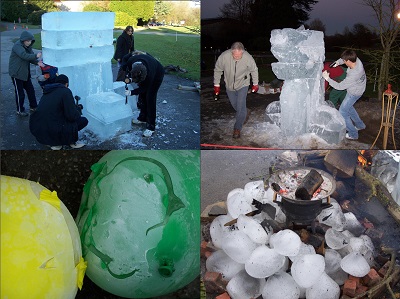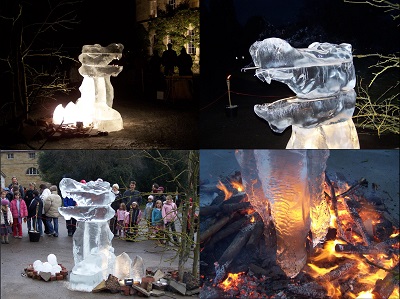Social Arts & Crafts

I am interested in the development of ‘group flow’ (based on Csikszentmihalyi’s ‘flow’, 1990) during a social environmental art project. Group flow can be the key to the success of a project. During my teaching practice at schools, I found that group flow contributed to personal and social confidence. I observed that the projects I facilitated often had an element of threshold awareness (Lievegoed, 1985), and therefore ‘Portals’ became the theme for the social environmental art activities that my PhD research was based on.
During my research, I explored the potential of social environmental art in education. I adopted Helgura’s (2011) terminology ‘transpedagogy’ to describe this combined field of social art and education.
An insight into how a facilitator may experience the development of ‘group flow’ can be a crucial information towards a better understanding of socially engaged art processes, therefore I reflected on my own practice using A/r/tography methodology (Springgay & Irwin, 2008) as part of my PhD research.
For further information on my work in the field of socially engaged art please visit the websites below.
The Schoodio of Ryedale
The latest project.
Wisening Gate
My PhD research.
LESSONS, COURSES, COMMUNITY ART portfolio in PDF
To view this portfolio, please click here.
What is Socially Engaged Environmental Art?

It is a kind of 'milkshake' that is made of Socially Engaged Art and Environmental Art. It is technically making art together in Nature.
In Socially Engaged Art, the artists want to make a social/economic difference with artwork created through collaboration with the public in a relational space (Bourriaud, 2002). The artwork, called ‘project’ is enacting social change. A part of the public upgrades from passive audience to active participant and the artist takes up the role of facilitator. The artwork is process based and the outcome is often delayed in time (Bishop). The artist aims to empower the participants to make changes in their own circumstances. They prioritise ethical values such as group dynamics, change of energy, raised consciousness and social encounters and the enrichment of the community (Kester).
Environmental Art is an umbrella term for a range of practices. For example, contemporary Land Art follows the ethos of minimal impact and develops an inextricable relationship to the natural environment. Many of the remarkable installations in nature are using materials found in-situ. The landscape as an inspiration and the created art are inseparably and intimately linked.
When I work as a facilitator, I encourage the participants to develop ecological awareness and involve them in processes that encompass sustainability, respect for nature and a small ecological footprint.
Selected Bibliography
Bishop, C., 2012. Artificial Hells: Participatory Art and the Politics of Spectatorship. NY/London: Verso.
Bourriaud, N., 2002. Relational Aesthetics. Trl. Pleasance, S. et al. from French 1st ed. 1998. Dijon: Les Presse Du Reel.
Csikszentmihalyi, M. 1990. Flow: The Psychology of Optimal Experience. Austr: HarperCollins.
Helgura, P., 2011. Education for Socially Engaged Art: A Materials and Techniques Handbook. NY: Jorge Pinto Books Inc.
Kester, G., H., 2013. Conversation Pieces: Community and Communication in Modern Art. LA: U o California Press Ltd.
Lievegoed, B., 1985. Man on the Threshold. Transl. J. M. Cornelis. Stroud: Hawthorn P.
Springgay, S., Irwin, R., L., et.al. 2008. Being with A/r/tography. Rotterdam: Sense Publ.

|

|
|

|
|